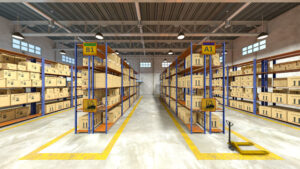Automation Scaling: How 3PLs Can Handle Peak Season Without Burning Out Their Systems or Teams
Smart strategies to scale automation across fulfillment, sortation, and returns workflows.

Automation scaling isn’t just about adding more equipment or software. It’s about scaling smart, matching your systems to how your operation actually runs, whether that’s outbound picking, putting, return processing, or high-speed sortation. For 3PLs managing complex workflows, that balance is everything during peak.
Here’s how to scale automation across your warehouse operation without overloading your team or breaking what’s already working.
1. Don’t Wait for the Surge to Start Scaling
Waiting to “see how things go” during peak season is a fast track to overload. Volumes spike (that’s a given). If you try to scale automation or labor in real-time, you’ll end up behind and burned out.
Instead, build in flexibility early. That might look like cross-training a second shift, setting up temporary scan scan-and-sort stations, or running a pressure test on your current layout. Even if you don’t use every piece on day one, you’ll have options ready when it counts.
Pro-Tip: simulate a peak load now. Add 30% to your current volume and walk the floor. Where do slowdowns start? What tasks pile up first? That’s where you need to focus your automation.
2. Match Automation Scaling to Your Actual Workflow
It’s easy to get caught up in flashy automation. But not every system fits every process. Scaling smart means finding tech that supports the way your team already works—without forcing a full overhaul during your busiest season.
Before you scale, ask:
- Will this solve a real bottleneck… or just move it?
- Can my team adopt this quickly, or will it disrupt upstream/downstream tasks?
- Does this give me visibility across the full flow—not just one process?
That’s where we come in. We work directly with 3PLs, DCs & FCs, and cross-border ecommerce facilities to find right-size automation. Whether you’re processing returns, picking orders, sorting parcels, or something unique (like the need to sort tires?). Our systems grow with you, flex with your volume, and adapt to real-life workflows.
3. Protect Throughput Without Burning Out Your Team

Make sure your labor model supports the automation you’re scaling:
- Use shorter, focused shifts during peak load periods
- Rotate teams between physically demanding and lower-impact stations
- Staff for exception handling, labeling, and staging—not just picking and packing
And keep your team in the loop. A 10-minute huddle at the top of each shift keeps everyone aligned on what’s flowing, what’s changing, and what needs to happen.
4. Build Systems That Stay Agile, Not Just Bigger
Scaling isn’t just about capacity, it’s about adaptability. During peak, stuff breaks: a carrier misses a pickup, a client reprioritizes SKUs, a sortation lane gets jammed. Can your automation flex when it happens?
Build flexibility into your system now. That could mean:
- Setting up reroute logic for split orders
- Cross-training teams to jump between receiving, returns, and outbound stations
- Using modular sortation systems that can reconfigure mid-shift
Automation scaling isn’t about doing more of the same. It’s about being able to do different things quickly when conditions shift.
5. Communicate Like You’re Scaling a Team, Not Just Tech
If your automation scaling plan doesn’t come with a communication plan, it’s going to fall apart.
Keep messaging tight, repeatable, and visual:
- Shift updates with clear production targets and changes in flow
- Dashboards showing what’s on track and what’s falling behind
- Quick resets for process changes when volume spikes unexpectedly
People move faster and work smarter when they know why things are changing—not just what to do.
TL;DR: Automation Scaling Is a Leadership Move
You don’t need the biggest setup or most advanced robotics to crush peak season. What you need is a strategy that fits your operation—whether that means returns, fulfillment, sortation, or all three.
So scale what matters. Train early. Flex smart. Protect your people. And keep the whole operation talking.
Peak season doesn’t wait. But if you scale with purpose, it won’t catch you off guard.
Ready to Scale Without Stress?
We partner with companies of all sizes to design automation systems that fit your workflow today and grow with your business tomorrow. Whether you’re managing returns, sortation, fulfillment, or all the above, we’ll help you build the kind of automation that adapts as you scale.
Let’s talk. Contact Us to start a conversation about automation scaling that actually works.

